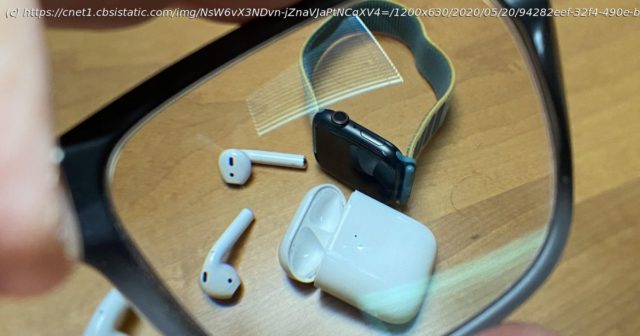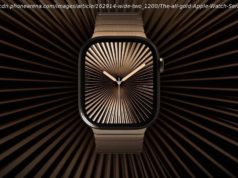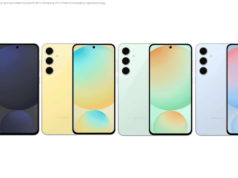First came VR. Then came a wave of AR headsets that were high-priced and full of promises of wild mixed-reality worlds. Apple could …
First came VR. Then came a wave of AR headsets that were high-priced and full of promises of wild mixed-reality worlds. Apple could be blending AR and VR with two different headsets in the next couple of years, but leading the way with a VR headset more like the Oculus Quest, according to a report in January by Bloomberg’s Mark Gurman. It could be expensive: Maybe even $3,000 or more, with 8K displays, eye tracking and cameras that can scan the world and blend AR and VR together, according to a report from The Information. An even more recent prediction by analyst Ming-Chi Kuo says Apple’s VR/AR headset is coming in 2022, with smart glasses around 2025, and maybe AR contact lenses after that. Last year, reports on Apple’s AR/VR roadmap suggested internal disagreements at Apple, or a split strategy that could mean a VR headset first, and more normal-looking augmented reality smart glasses later. Read more: The iPhone 13 rumor mill has already started. Here’s what we’re hearing These reports have been going around for several years, including a story broken by CNET’s Shara Tibken in 2018. But the question is: When will this happen, exactly? 2021,2022 or even later? Apple’s been building more advanced AR tools into its iPhones and iPads, setting the stage for something more. But we still don’t know what that thing (or things) is. What’s increasingly clear is that the rest of the AR/VR landscape is facing a slower-than-expected road to AR glasses, too. VR, however, is a more easily reachable goal in the short term. Apple has been in the wings all this time without any headset at all, although the company’s aspirations in AR have been clear and well-telegraphed on iPhones and iPads for years. Each year, Apple’s made significant strides on iOS with its AR tools. It’s been debated how soon this hardware will emerge: next year, the year after or even further down the road. Or whether Apple proceeds with just glasses, or with a mixed-reality VR/AR headset, too. I’ve worn more AR and VR headsets than I can even recall, and been tracking the whole landscape for years. In a lot of ways, a future Apple AR headset’s logical flight path should be clear from just studying the pieces already laid out. Apple just acquired VR media-streaming company NextVR, and previously purchased AR headset lens-maker Akonia Holographics. I’ve had my own thoughts on what the long-rumored headset might be, and so far, the reports feel well aligned to be just that. Much like the Apple Watch, which emerged among many other smartwatches and had a lot of features I’d seen in other forms before, Apple’s glasses will probably not be a massive surprise if you’ve been following the beats of the AR/VR landscape lately. Remember Google Glass? How about Snapchat’s Spectacles? Or the HoloLens, or Magic Leap? Facebook is working on AR glasses, too, and Snap, and also Niantic. The landscape could suddenly get crowded fast. Here’s where Apple is likely to go based on what’s been reported, and how the company could avoid the pitfalls of those earlier platforms. Apple declined to comment on this story. There’s already one well-polished success story in VR, and the Quest 2 looks to be as good a model as any for where future headsets could aim. Gurman’s latest report makes a potential Apple VR headset sound a lot like Facebook’s standalone device, with controller-free hand tracking and spatial room awareness that could be achieved with Apple’s lidar sensor technology, introduced on last year’s iPad Pro and iPhone 12 Pro. Apple’s headset could end up serving a more limited pro or creator crowd, or go for a mainstream focus on gaming… or fitness. My recent experiences with the Oculus Quest’s fitness tools feel like a natural direction for Apple to head in, now that the Apple Watch is extending to subscription fitness training, pairing with TVs and other devices. The Oculus Quest can see through to the real world and extend some level of overlap of virtual objects like room boundaries, but Apple’s headset could explore passthrough augmented reality to a greater degree. I’ve seen impressive examples of this in headsets from companies like Varjo. It could be a stepping stone for Apple to developing 3D augmented reality tech on smaller glasses designs down the road. Right now, there aren’t any smart glasses manufacturers able to develop normal-looking glasses that can achieve advanced, spatially aware 3D overlays of holographic objects. Some devices like the nReal Light have tried, to mixed success. Facebook’s upcoming smart glasses this year aren’t full AR, but Facebook is working on ways to achieve that tech later on. Apple might take a similar approach with glasses, too. Recent reports, including those from Bloomberg and The Information, say the VR headset would likely be so expensive, and powerful, that it would aim for a limited crowd rather than the mainstream. If so, it could target the same business/creative zone that more advanced VR headsets like the Varjo XR-3 are aiming for. The headset, according to the latest story from The Information, will have 8K displays, an array of cameras for tracking the outside world, plus eye tracking and swappable headbands that could offer extra battery life or spatial audio. Varjo’s hardware could very well be a roadmap: It has a much higher-resolution display (which Apple is apparently aiming for), can blend AR and VR into mixed reality, and is designed for pro-level creative tools. But the report also says Apple’s headset could work as a standalone device, like the Oculus Quest.






